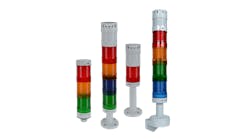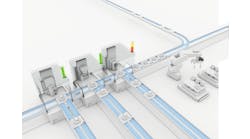Sound the alarm: How to design effective distress reporting systems for machines and processes
Help! I need help!
We can yell all we want, but what if no one hears us? We are in distress but have no way of letting anyone know that we have, in fact, fallen, but we can’t get up.
The need for distress reporting is widespread, and we always need an avenue to get access to the help we need.
There are many ways to alarm our situations, and they take many forms. Visual, audible, smell and touch come to mind.
“Hey, doc, it hurts when I do this,” is a common phrase used in medical offices around the continent. But what if you are a machine or process? How can you call for help?
Visual and audible are the two main sensory responses that a plant-floor process or machine can implement to get the attention of someone—to get the attention of anyone.
But as always it has to get to the person who can help. During one project I worked on, which was designed by others, I might add, I was required to put alarming on the human-machine interface (HMI)—standard procedure—but I was also required to sound a horn when the process was in alarm.
The problem was that this control panel and system were independent and in a remote location, which brings to mind the predicament of a tree falling in the forest.
The system could be going up in flames, and, yes, the beeper would beep, but there would be no one to hear it.
I am fascinated by the self-checkouts in stores that have stack lights at the self-scanning registers. Most don’t know that green means it’s available, that yellow means it is occupied and that red means the current user needs assistance.
I have seen stack lights with as many as seven lights. Who even remembers what they all mean? Oh, sure, there is a sheet on the panel.
I also have experienced both audible and visual alarming prompts that are inside an area that no one knows about, which brings me to the whole concept of alarming and messaging.
“Line 3 Down” is not a very intuitive message, regardless of how it is delivered. Ian Nimmo is an individual who runs a company called User Centered Design Services. He recommends supervisory control and data acquisition (SCADA)/HMI design and alarming priorities.
When I had the chance to talk with him, he was lamenting oil-and-gas refineries that have 20 alarms plus active at any one time because the alarm design calls for the smallest minutiae of indications to the system/process, which tends to swamp the operators with needless information and take their focus away from the real deal.
A stack light will be able to give you an alarm structure such as Level 3/2/1/0. When a 0 alarm shows up, you need to act now. Most programmable-logic-controller (PLC) developers group alarms together in process elements, not in a way that says, “This is important, so don’t ignore me.”
Many times, I have heard a car alarm in a parking lot indicating an issue—you have to. This could mean someone bumped into your car or someone is stealing it. You would think that the level of urgency would be reflected in the beeping. Nope. It’s all the same to the point where no one even reacts.
SCADA alarming is no better. Alarms are active on a page forever. They don’t even acknowledge them because they just keep coming back. No one changes the alarm setpoints to reduce the frequency of the alarm point, or they put it to a ridiculous number, so it never comes on. People will always find a way to make their daily life or job easier.
And we give them the ability to change those setpoints via the HMI, but who reviews the logs to say that should not have been done based on time of year and ambient conditions? I submit: no one.
Alarming is one of the main periscopes into any machine or process that we can have. Stack lights work well for simplistic alarm strategies, but, for that level of sophistication that some need, they can’t cut it.
SCADA/HMI and a PLC/distributed control system (DCS)-generated audible alarm will quickly be taped over or disconnected if it is in that area of where people are.
It is important to create an alarm strategy that works so that the red light isn’t always going off or that siren isn’t being heard for all alarms similar to that car alarm.
We need a structure in audible and visual sensory presentation that makes sense for the system and the process. Most importantly, as Nimmo has always suggested, don’t flood the environment with useless information/alarms. The real stuff will be missed, and the results will not be to your liking.





